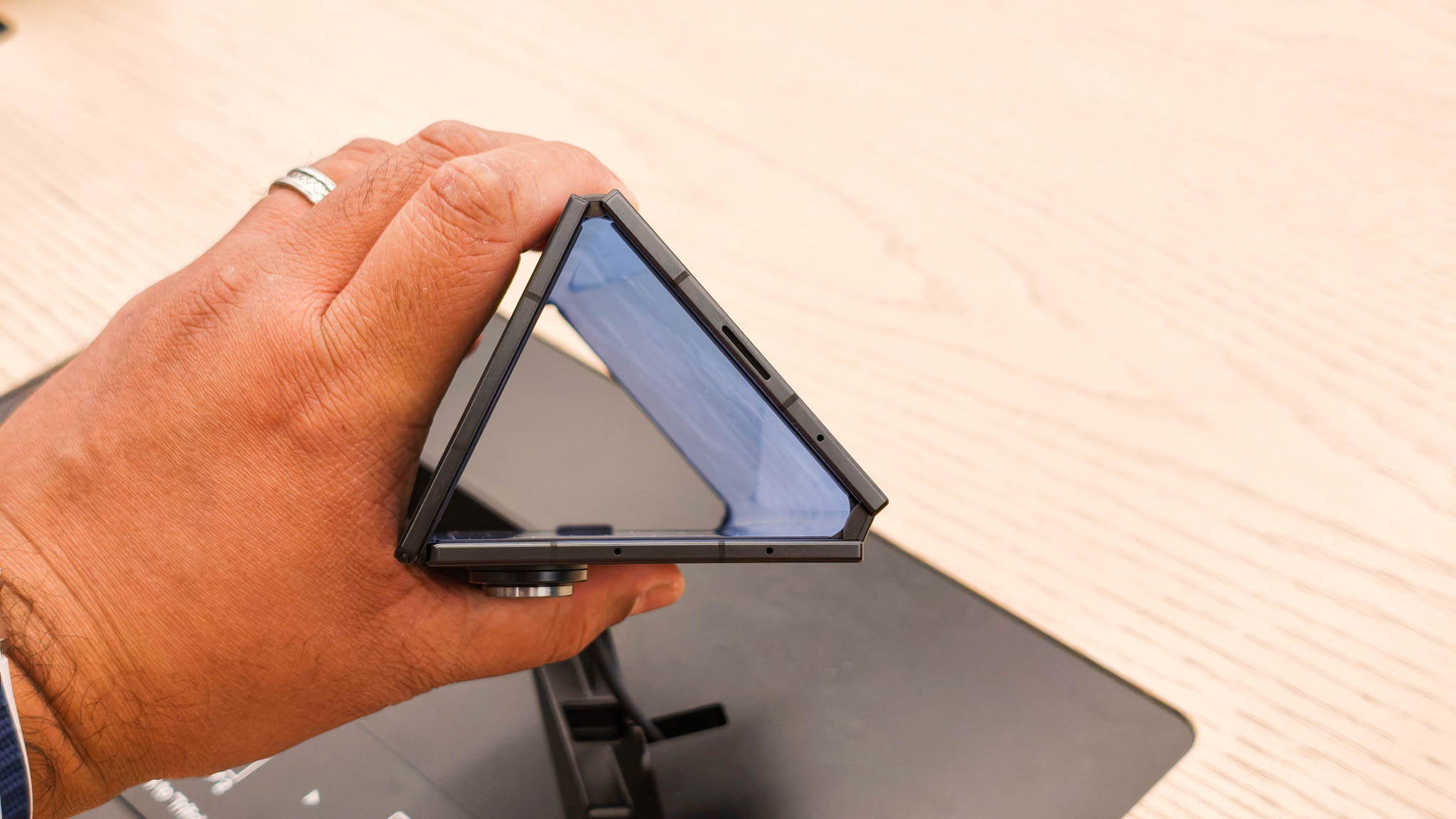Garmin Instinct 2X Solar vs. 2X Solar Tactical Edition: Which should you buy?
The new Instinct has some impressive new software and battery power, but do everyday people need the Tactical upgrade?
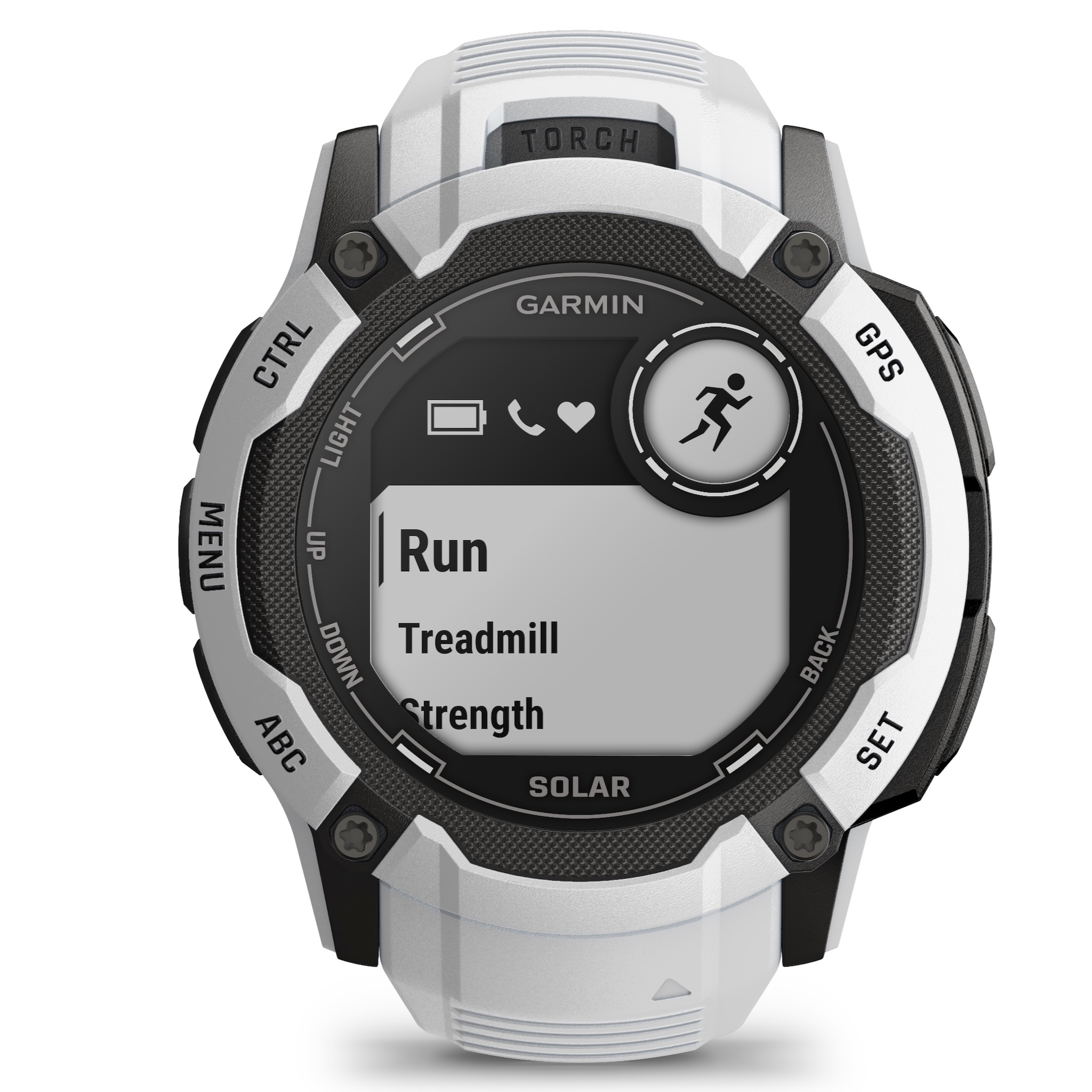
Designed with powerful battery life and rugged durability in mind, the Instinct 2X Solar stands out thanks to a built-in flashlight that can shine bright white or red depending on your needs. Its power glass derives more energy from sunlight than past generations, and it adds cool new features like Training Readiness.
Pros
- Nearly all the same software
- $50 cheaper
- More color options
- Slightly slimmer
Cons
- No Tactical-specific tools or activities
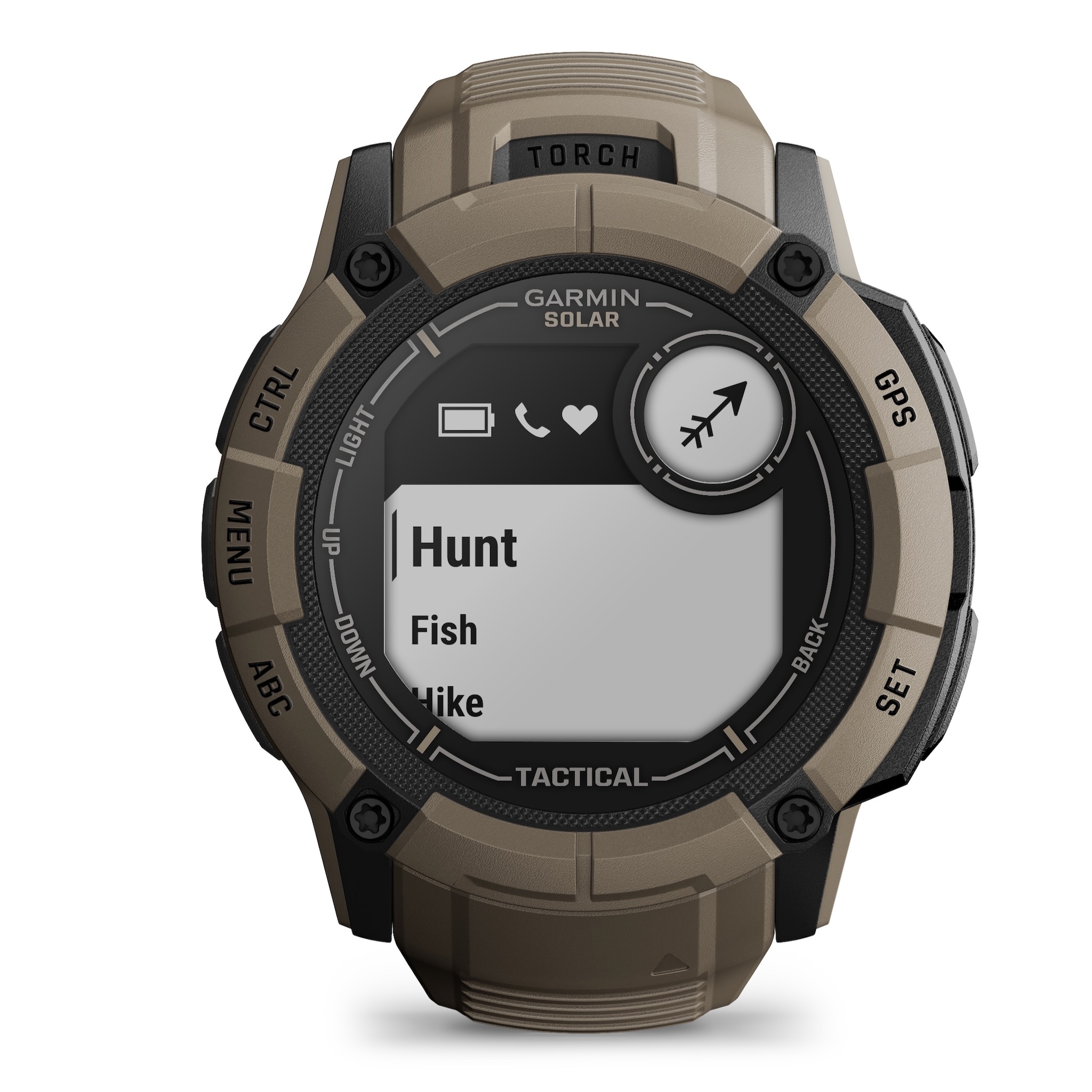
If you're planning on wearing a Garmin watch into actually dangerous environments, this Tactical Edition gives you a few key tools from the Tactix 7 lineup at less than half the price. Otherwise, it's essentially the same watch as the 2X Solar with a couple of "serious" color finishes.
Pros
- Night Vision Mode
- Stealth Mode
- Kill Switch
- Jumpmaster Mode
- Flaslight green light mode
Cons
- Higher price
- Most people don't need Tactical tools
The Garmin Instinct 2X Solar arrived this June as a complete package, without the options like non-Solar, Camo, Surf, or dēzl found with the standard Instinct 2 series. But Garmin is selling a Tactical Edition once again, adding a few exclusive tools that some users will find vital, but others may see as totally superfluous.
The Garmin Instinct 2X Solar and Solar Tactical Edition only differ physically in a couple of key areas, but the mere $50 difference means some people will be tempted to upgrade just to get every possible feature available. But should you? Unless you have a very specific type of job or lifestyle, probably not. We'll explain why below.
Garmin Instinct 2X Solar vs. 2X Solar Tactical Edition: What's the same?
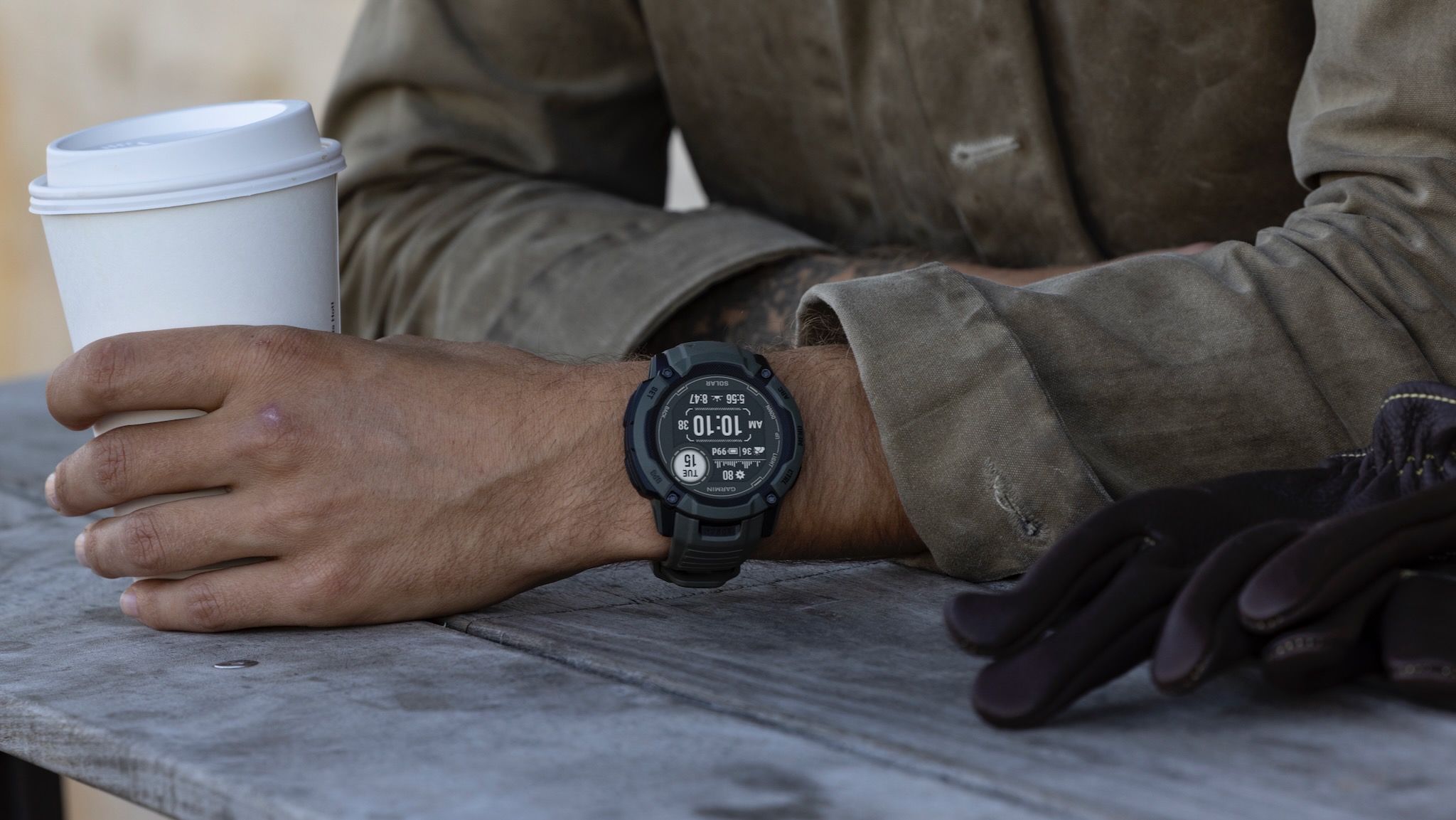
The Garmin Instinct 2X Solar Tactical Edition is a close spin-off of the standard 2X Solar model, with several software differences but (essentially) the same hardware. Below, we've broken down all of the specs shared by both models:
Materials: Both Instinct 2X Solar models use a polymer case and bezel, a 26mm silicone strap designed for 145-228 mm wrist circumferences, and a Corning Gorilla Glass DX lens with Power Glass that's 50% more efficient than the original Instinct 2 Solar.
Protection: Both models have 10ATM water resistance — meaning they can dip 100 meters below the surface without damage, in theory — and military-grade protections for "thermal, shock, and water resistance." With the original Instinct 2, only the Tactical model had official MIL-STD-810 protection.
Display: You get a 176 x 176 resolution, 1.1-inch memory-in-pixel (MIP) display with a two-window design (meaning there's a fixed circular portion of the display that shows certain customizable data like your heart rate).
Battery life: You have identically robust numbers for both watches, shown below. The "Solar" numbers come when you receive at least 3 hours of sunlight per day in 50k lux conditions, or 150k total. The lux value of your time outdoors will vary depending on where you live, but the 2X Solar doesn't even need solar energy to last a long time.
Get the latest news from Android Central, your trusted companion in the world of Android
| Battery category | Garmin Instinct 2X Solar (+ Tactical) |
|---|---|
| Smartwatch mode | 40 days/ Unlimited w/ solar |
| GPS mode | 60 hours; 145 w/ solar |
| All-satellite systems | 45 hours; 65 w/ solar |
| All Satellite Systems + Multi-Band | 27 hours; 36 w/ solar |
| Max Battery GPS Mode | 150 hours; unlimited w/ solar |
| Expedition GPS Activity: | 60 days; unlimited w/ solar |
Health monitoring: Both watches measure current, resting, and abnormal heart rates, along with heart rate variance (HRV). Either Instinct 2X Solar watch can also measure continuous respiration rate, blood oxygen levels, VO2 Max, and stress, as well as hydration needs and your sleep score.
Sensors: The Instinct 2X Solar is the first Instinct model to support all-systems GNSS across GPS, GLONASS, and GALILEO, as well as multi-band GPS for the L1 and L5 frequencies. The battery life data above shows how these impact the 2X's longevity, but we've seen with watches like the Forerunner 265 the pinpoint accuracy of multi-band tracking.
Both models also give you an altimeter, accelerometer, gyroscope, compass, and thermometer.
Activities: Aside from the Tactical-specific tools we'll discuss later, both watches have the same sports modes and tools for Running, Cycling, Swimming, Golfing, and general Training and Recreation. Among the newest features, you'll find Training Readiness, a Morning Report, and specific new sports modes like Obstacle Course Racing.
Although Garmin advertises Dual Grid as an important Tactical tool — it shows your latitude/longitude and military grid reference system data on the same screen — it's also available on the standard Instinct 2X, as well as other watches like the Garmin Instinct Crossover and Forerunner 955.
Garmin Instinct 2X Solar vs. 2X Solar Tactical Edition: What's different?
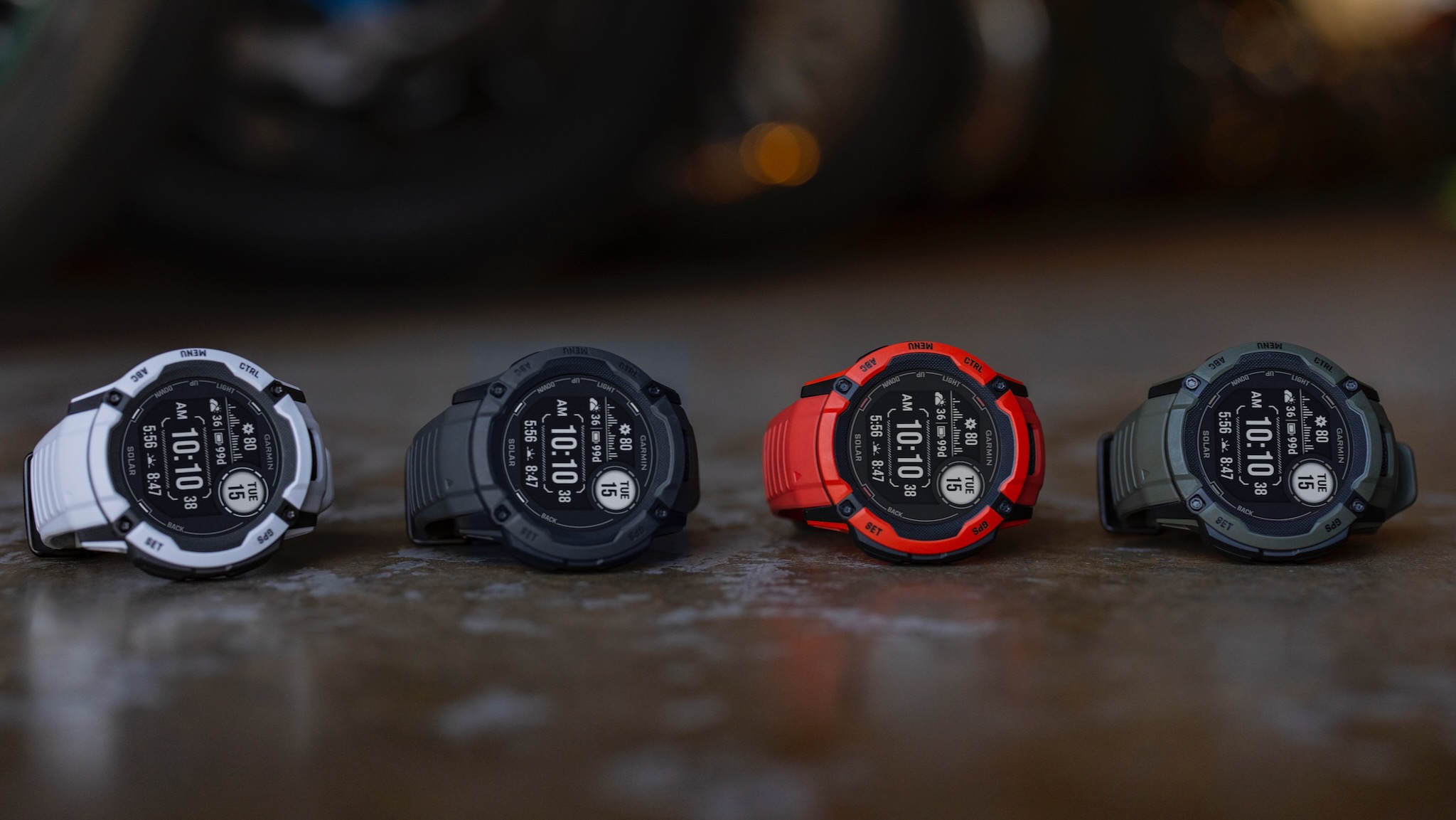
The Garmin Instinct 2X Solar doesn't really have any exclusive features compared to the Tactical Edition, except for a wider array of colors. The standard Instinct 2X Solar comes in Graphite, Whitestone, Flame Red, and Moss Green, with the latter two vibrant options as the standouts.
The 2X Solar Tactical ships in two finishes, Black and Coyote Tan. Black has a darker tint to it than Graphite, which makes it blend in at night more, while Coyote Tan has more of a desert feel that tactical types will like.
Both Garmin Instinct 2X Solar watches have an LED flashlight built into the case, with varying intensities and the option to turn on specific strobing patterns such as one that matches your running cadence. Both LEDs default to white, but each 2X watch has a unique color.
The standard model has a red safety light mode meant to illuminate your surroundings at night and ensure other people can see you. The Tactical model uses a green nighttime flashlight instead, which might stand out less if you're trying to blend into your surroundings.
One last note: although the Instinct 2X twins both weigh a hefty 67g, the Tactical edition measures 0.2mm thicker (14.5mm vs. 14.7mm). Even if it's still quite thick, the standard Instinct 2X Solar may be slightly less likely to catch on things.

Now, let's move on to what the Garmin Instinct 2X Solar Tactical Edition specifically offers that the standard edition doesn't, to justify the extra $50 price. In most cases, they are serious tools that only a niche user would realistically need, such as someone in the military.
For example, the Night Vision mode is designed to be read while wearing Night Vision goggles. Or if you frequently perform HALO or HAHO jumps, the Jumpmaster mode helps you plan your release point based on wind and airplane speed, desired landing spot, and so on.
If you're embarking on a sensitive mission, you have a Stealth mode that disables wireless communication and shared GPS positioning instantly. If necessary, the "Kill Switch" deletes all user data from the watch instantly.
There's even a Ballistics app "for long-range shooting in the field," though you'll need to pay a separate fee for this.
The only other significant difference we noticed is that the Tactical Edition is apparently "wind meter compatible," which probably refers to Garmin's pricey wind instruments designed for boats.
Garmin Instinct 2X Solar vs. 2X Solar Tactical Edition: Which should you buy?
The Garmin Instinct 2X Solar is a rugged, long-lasting device for the most hardcore Garmin watch fans, with some key upgrades over the Instinct 2 Solar for the same price. 99.9% of buyers should choose it over the Tactical Edition, which has features so specific to military use that they're irrelevant to most people.
On the subject of military-quality smartwatches, we're completely unqualified to give our opinion. But it's clear that the $499 Instinct 2X Solar Tactical is among the more affordable options in this sphere, compared to options like the $1,099 Garmin Tactix 7 or $1,599 Tactix 7 Pro Ballistics Edition. These have tools like a "Direct-to-Navigation" waypoint from the worldwide aeronautical database, a "Hunt Activity" tool, a Maps+ integration for satellite imagery, and weather reports.
Compared to the Tactix 7, the Instinct 2X Solar Tactical Edition is more of a stripped-down, non-touch experience with less tactical upside. But if you can't afford all of Garmin's military-focused tricks, that may be your best possible option.

Choose the Garmin Instinct 2X Solar over the Tactical if you don't actually live a tactical life, and just want a long-lived, rugged smartwatch.

Choose the Garmin Instinct 2X Solar Tactical Edition if you need to drop off the grid or erase your data at a moment's notice, or if you want a green-colored flashlight for nighttime that doesn't stand out — but you can't afford the Tactix 7.

Michael is Android Central's resident expert on wearables and fitness. Before joining Android Central, he freelanced for years at Techradar, Wareable, Windows Central, and Digital Trends. Channeling his love of running, he established himself as an expert on fitness watches, testing and reviewing models from Garmin, Fitbit, Samsung, Apple, COROS, Polar, Amazfit, Suunto, and more.
